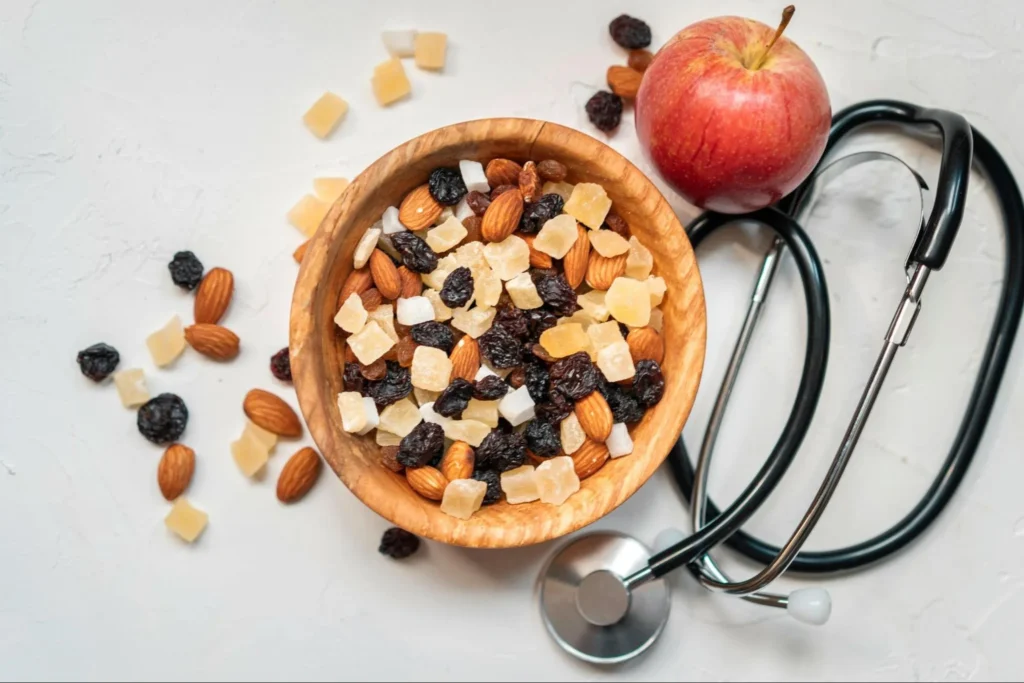Wellness Momentum Secrets: Combat Fatigue & Achieve Long-Term Health
Discover the secrets to sustained wellness and combat fatigue with expert-backed strategies. This article unveils practical approaches to make health initiatives engaging and sustainable. Learn how to build momentum through simple structures, realistic rhythms, and personalized tactics that fit seamlessly into your lifestyle.
- Ground Wellness in Joy and Curiosity
- Make Wellness Initiatives Fun and Engaging
- Embrace Strategic Imperfection for Sustainable Progress
- Focus on Structure Simplicity and Consistency
- Adopt Realistic Rhythm Over Linear Improvement
- Create Gamified Wellness Programs with Variety
- Meal Prep for Long-Term Health Success
- Stay Flexible to Maintain Wellness Momentum
- Prioritize Tasks Based on Energy Levels
- Embed Personalized Wellness into Work Culture
Ground Wellness in Joy and Curiosity
The most effective way I’ve found to maintain momentum in long-term wellness initiatives is by grounding my routine in joy and curiosity. For me, that starts with movement I genuinely love — dancing, barre, and yoga. These aren’t just workouts; they’re ways I connect with my body, release stress, and feel alive. When movement feels like a celebration instead of a chore, it becomes something I look forward to, not something I have to force.
To combat wellness fatigue, I’ve learned to approach wellness as a lifelong exploration rather than a rigid plan. I stay engaged by continuously learning — whether that’s reading about new approaches to nutrition, nervous system regulation, or the science of habit formation. Each time I discover something new, it reinforces my “why” and brings fresh energy into the process.
I’ve also realized that giving myself permission to adapt is essential. Wellness isn’t static — it shifts with seasons, stress levels, and life stages. Instead of trying to power through fatigue, I check in with myself and ask what I really need in that moment. Sometimes it’s a high-energy dance session, and other times it’s restorative yoga or simply rest. That flexibility keeps me connected and prevents burnout.
Ultimately, staying consistent comes down to making wellness feel personal, purposeful, and sustainable — something I’m building a relationship with, not just a goal I’m trying to reach.
 Dr. Jo L
Dr. Jo L
Holistic Life, Wellness, Spiritual Coach & Yoga Teacher, TulaSoul
Make Wellness Initiatives Fun and Engaging
Wellness initiatives obviously need to be valuable sources of health information and learning, but they also must be FUN! Since I am in an educational setting (and consulting), we frequently plan a series that can last for the entire 10-month school calendar. The key is to visit the group once per month with exciting topics, raffle prizes, dynamic speakers, incentives, hands-on learning, gift totes, and recognition for ongoing participation. The leadership team also has to be involved to encourage and support these wellness initiatives. Getting management buy-in throughout the duration of the planning process is a definite must as well.
For example, everyone loves to get together in October for Breast Cancer Awareness by wearing pastels, hosting the 3D Mammovan, and attending a “Think Pink” party where everyone is learning about the triple touch technique, signs and symptoms of breast cancer, early detection, and how to have a proactive approach to breast health. Add music, mocktails, and laughter, and participants will certainly come back for follow-up in future months.
Similarly, in February, many wellness practitioners focus on blood pressure and hypertension. Why not encourage everyone in the school to wear the color red? How about a fashion show highlighting survivors of heart attacks and strokes, both men and women? With the help of a nurse, we can offer an extended contest to see whose individual blood pressure improved the most. This can be a very fun way to encourage exercise, better nutrition, and stress reduction all school year long.
Whatever long-term health initiatives are offered to employees are fantastic, but they must be upbeat, high-energy, amusing, enjoyable, and gratifying. If they are not structured in this way, wellness fatigue will definitely set in.
 Tina Severance-Fonte
Tina Severance-Fonte
Wellness Coordinator, Broward Schools & Private Consulting
Embrace Strategic Imperfection for Sustainable Progress
In short, the most effective way I’ve found to maintain momentum in long-term wellness initiatives is Strategic Imperfection!
As co-founder of Heal Thru Food™, an online wellness community, and a New York Times bestselling cookbook author, I work with high achievers who often bring their “all-or-nothing” mindset to wellness. But what actually sustains long-term momentum is what I call Strategic Imperfection — the idea that showing up at 50% consistently beats aiming for 100% and burning out.
Wellness fatigue creeps in when goals are rigid and unrealistic. That’s why our Heal Thru Food™ community is built around monthly themes and weekly wellness challenges that are doable, flexible, and designed for real life. We focus on progress without perfection.
The most effective antidote to burnout is accountability without shame and a supportive space where people can reset, recommit, and be reminded that it’s not about doing it all, it’s about doing what matters, consistently.
 Missy Lapine
Missy Lapine
The Functional Health Coach, HEAL THRU FOOD
Focus on Structure Simplicity and Consistency
In my experience, momentum in long-term wellness comes from structure and simplicity. Most people don’t need a complicated plan; they need something consistent, realistic, and flexible enough to fit their life. I usually tell patients: the goal is not perfection, it’s showing up. That might look like walking 20 minutes instead of an hour, or prepping two healthy meals instead of seven. Small wins matter more than perfect streaks.
When it comes to wellness fatigue, I’ve seen that it often comes from burnout or unrealistic expectations. That’s why I recommend periodic resets, reviewing what’s working, what’s not, and adjusting. Building in variety (new recipes, switching up workouts) also helps avoid mental burnout. And most importantly: remind people of their “why.” Sustainable health isn’t just about weight or lab values; it’s about energy, sleep, mood, and confidence. Reconnecting with that helps people stay in it for the long run.
 Julio Baute
Julio Baute
Medical Doctor, Invigor Medical
Adopt Realistic Rhythm Over Linear Improvement
The most effective way I’ve found to maintain momentum in long-term wellness—both for clients and for our team—is to drop the illusion of “constant progress.” That mindset burns people out. At Ridgeline Recovery, we replaced the idea of linear improvement with what we call realistic rhythm: structured ebbs and flows built into wellness goals. It’s not about sprinting—it’s about showing up consistently without burning out.
The most common cause of “wellness fatigue” is treating self-care or recovery like a performance metric. People start strong, overcommit, and then feel shame when motivation dips. So we flipped the model. We set minimums, not maximums. What’s the least you can do daily to stay anchored, even on your worst day? If someone’s baseline is a five-minute walk, a journaling prompt, or even a single deep breath between meetings—great. That’s the floor. Anything beyond it is a bonus.
We apply this in our clinical model and our internal operations. Team-wide wellness isn’t driven by one-off retreats or platitudes—it’s built into the week. We’ve embedded flexible check-ins, no-meeting recovery blocks, and shared accountability groups that focus on maintenance over milestones.
Here’s what I’ve learned: if your wellness plan only works when you’re motivated, it’s broken. You need systems that carry you when you’re not. That’s how you keep momentum without forcing it.
Wellness is resilience in practice—not perfection in theory. And the only way to sustain it is to give people permission to be human while they heal or grow.
 Andy Danec
Andy Danec
Owner, Ridgeline Recovery LLC
Create Gamified Wellness Programs with Variety
I launched a “Wellness Passport” program for our team last year. Every month, we print out a small card listing five simple activities (like a 10-minute stretch break, a fruit-and-water day, or a brief guided meditation). When someone completes an activity, they stamp their passport and drop it in a box by Friday afternoon. At the end of each month, we draw three cards for small rewards—everything from a $20 online gift card to an extra hour off on Friday. That element of chance keeps people curious (“What will February’s activities be?”) and turns mundane habits into a shared game rather than another checkbox.
After two quarters, I noticed participation slipping around week three each month, so I added a “Surprise Swap” twist: once per month, any team member can nominate a colleague to swap passports. Suddenly, stretches became a lunchtime group session, and someone else might choose the meditation break for everyone to join. That mid-month social reset halted our usual drop-off, boosted peer encouragement, and reminded folks that wellness is more fun together—and results have stuck. By making healthy habits a lighthearted ritual with built-in variety, we’ve kept momentum high and sidestepped the usual burnout that comes with “wellness fatigue.”
 Chris Rowland
Chris Rowland
Owner, Rowland Pest Management
Meal Prep for Long-Term Health Success
I’ll tell you straight up that meal prepping has been the most effective way for me to maintain momentum in long-term wellness goals.
When I’m running tours from sunrise to sunset, it’s way too easy to grab quick junk food or skip meals altogether. Meal prepping on my day off sets me up for the whole week. I make sure I have grilled chicken, steak, or shrimp ready along with roasted sweet potatoes and vegetables. That way, I’m not scrambling for healthy choices when I’m tired.
To combat wellness fatigue, I keep it simple. I don’t try to prep fancy meals every week. I rotate a few basic recipes I actually enjoy eating. I also let myself switch it up with sauces or seasonings so I don’t get bored. Another thing that helps is giving myself permission to have a treat meal once in a while without guilt. It keeps me from feeling restricted or burned out.
My advice is to meal prep meals you actually want to eat, not just what you think you should eat. Make it realistic for your lifestyle so you stick with it for the long haul. It’s like prepping the boat before a big day on the water. If you’re ready ahead of time, everything flows more smoothly.
 Christopher Farley
Christopher Farley
Owner, Flippin’ Awesome Adventures
Stay Flexible to Maintain Wellness Momentum
I’ve learned that staying flexible really keeps me moving forward with my wellness goals. I used to get thrown off by unexpected things like a crazy workweek, travel, or family commitments. I handle these curveballs much better now. If I am tight for time, I’ll go for a quick 15-minute walk or sneak in a short stretch session instead of skipping my workout. And when I’m on the road, I make it a point to stay hydrated, stretch regularly, and eat with awareness, instead of struggling to follow a strict diet and exercise regimen that simply won’t work for me.
Embracing this flexible mindset has been my secret weapon against ‘wellness fatigue,’ which is that discouraging feeling you get when you can’t do things perfectly. I’ve realized it’s way more effective to adjust on the fly than to just give up. This wards off that sense of failure, and I focus on consistency over perfection. It’s all about keeping wellness manageable and not letting it overwhelm you.
 Dr. Don Beasley
Dr. Don Beasley
Physician, Boise ENT
Prioritize Tasks Based on Energy Levels
Including biking into my daily schedule meant incorporating a bunch of long-term wellness habits into my day as well. Wellness fatigue, if not dealt with, can kill your momentum and your self-improvement routine.
The only effective way to deal with such fatigue is to listen to your body and recognize the cause of it. The causes for my fatigue ranged from me being unwell to a stressful phase I was going through, a lack of hydration in my day, or even a simple lack of motivation.
Your routine must incorporate your needs to maintain the healthiest lifestyle in your current circumstances. If you had a late night, you might be better off sleeping in than waking up an hour earlier, which would lead to worse quality of sleep and exercise. Include space for such off-days regularly in your long-term planning.
Maintain a list of your responsibilities prioritized and sorted into labels for off days, normal days, and ideal days. Prioritize according to tasks that you feel are crucial, those that you can perform even on off days to help you maintain productivity, and factors such as possible illnesses or exhaustion.
 Shailen Vandeyar
Shailen Vandeyar
Cycling Coach & CEO, Biking Bro
Embed Personalized Wellness into Work Culture
Maintaining momentum in long-term wellness initiatives comes down to embedding wellness into the core work culture rather than treating it as an occasional activity. One effective approach is to personalize wellness touchpoints, offering flexible options like guided mindfulness breaks, virtual fitness classes, or even unplug hours tailored to different teams’ workloads. What really makes the difference is listening to what people actually need and adjusting programs accordingly. To combat wellness fatigue, shifting the narrative from “participation” to “permission,” giving individuals the space to slow down, disconnect, or opt for low-effort mental health days, helps sustain engagement without burnout. The goal isn’t constant activity; it’s consistent availability and psychological safety.
 Anupa Rongala
Anupa Rongala
CEO, Invensis Technologies


